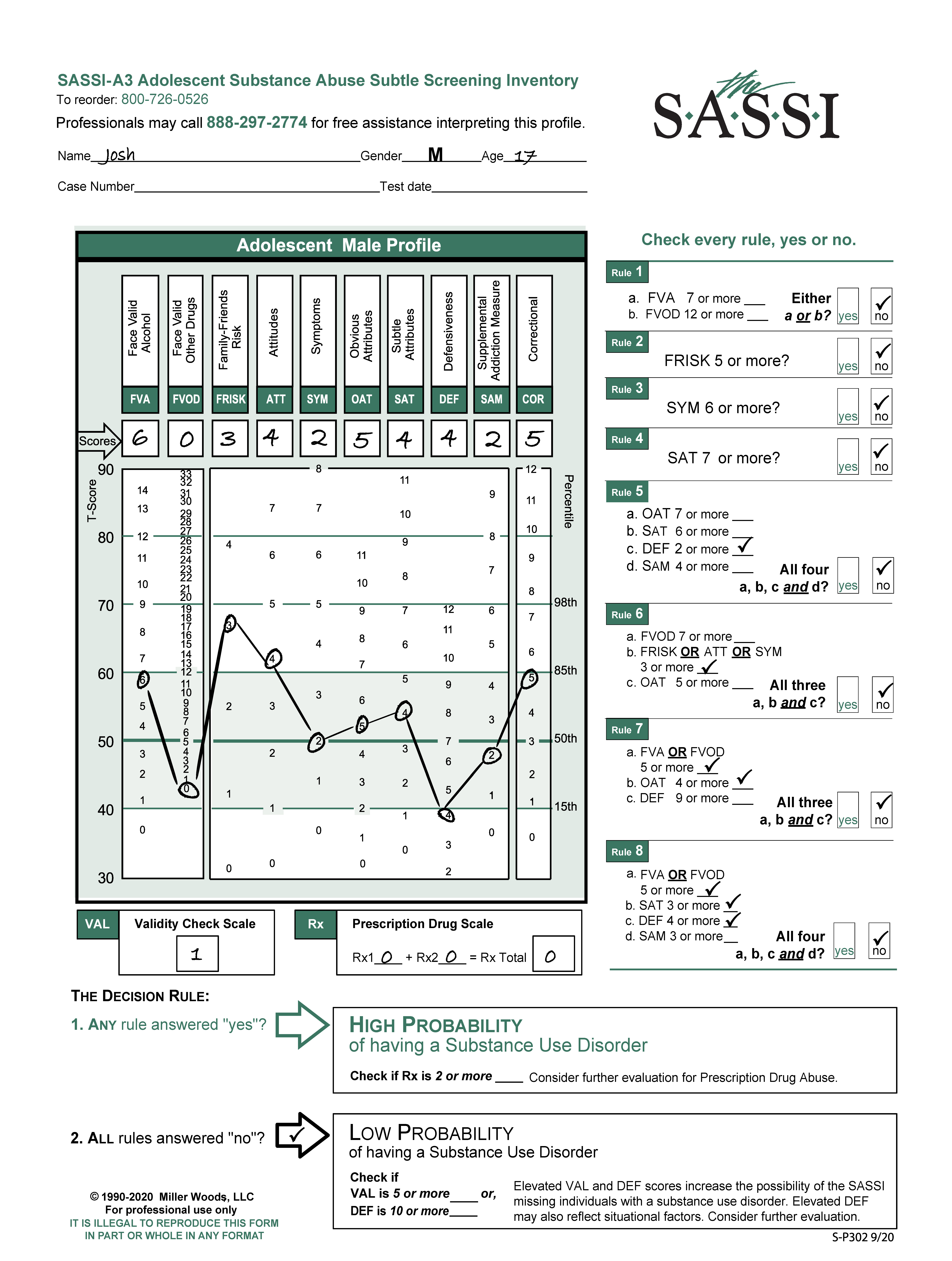This sample case is based in part on SASSI-A3 scale scores that were called into our clinical help desk. The client, Josh (not his real name), is a 17-year-old male who was a senior in high school at the time of the assessment.
Josh was referred to the school counselor after he was caught drinking beer on the school campus with some of his friends during a school-sponsored activity. Josh, an above-average student with no prior history of alcohol or drug-related problems, plans to attend college in the fall. His parents reported that Josh had been staying out later than usual on some weeknights and that they confronted him once about alcohol on his breath.
The SASSI-A3 was administered as part of the assessment to rule out the possibility of a Substance Use Disorder. The scores are illustrated in the accompanying profile. The results indicate that Josh has a Low Probability of having a Substance Use Disorder (Rule 1-8 answered “no”). The VAL and DEF scales arenot elevated, suggesting that there is not a particularly high likelihood that the SASSI incorrectly missed identifying Josh as having a Substance Use Disorder. He appears to have responded to the instrument in a forthright manner and therefore probably provided a reasonably accurate account of his alcohol and drug-related experiences (DEF=4). On the FVA items he reports using to cope with problems, moderate loss of control (drinking more than he intended to once or twice), and negative consequences including the current incident and confrontation with his parents. Both the FRISK and ATT are elevated so some attention should be given to who Josh is associating with along with his beliefs and values regarding substance use.
Given the Low Probability outcome, it is reasonable to infer from this result that Josh is most likely involved in a pattern of substance use that is experimental/recreational in nature. However, given that he has begun to experience some issues of loss of control and negative consequences, he may be at risk for developing a substance use problem if he does not receive adequate assistance and support for behavioral change. This may be a particularly important consideration when he goes to college and is likely to be exposed to peer groups in which regular substance use is the norm.
The SASSI-A3 results indicate that Josh is not likely to have a Substance Use Disorder at this time. Additional assessment information did not indicate that Josh has been experiencing risk factors over and above what was already indicated on the SASSI-A3. He will most likely benefit from a cognitively based educational/ prevention program geared towards increasing his awareness of the harmful effects of alcohol use. Values clarification and exploring alternate means of peer group support may also be effective in helping Josh make healthier social choices.

